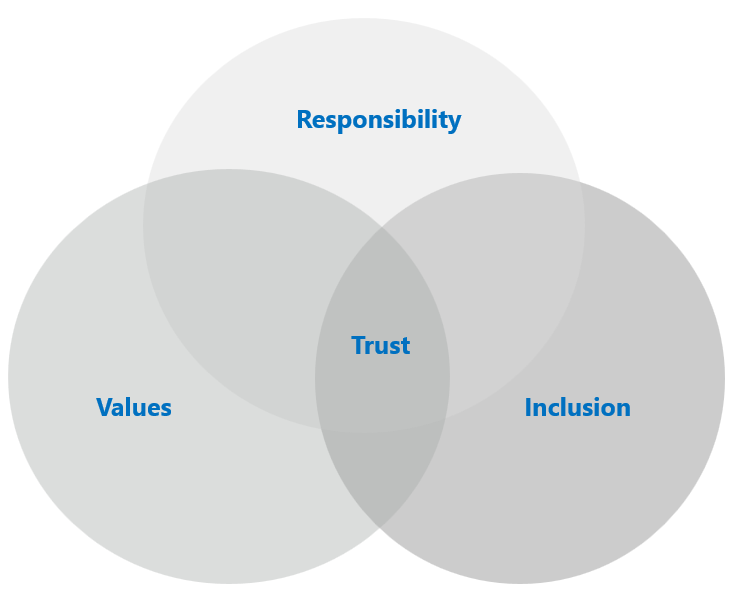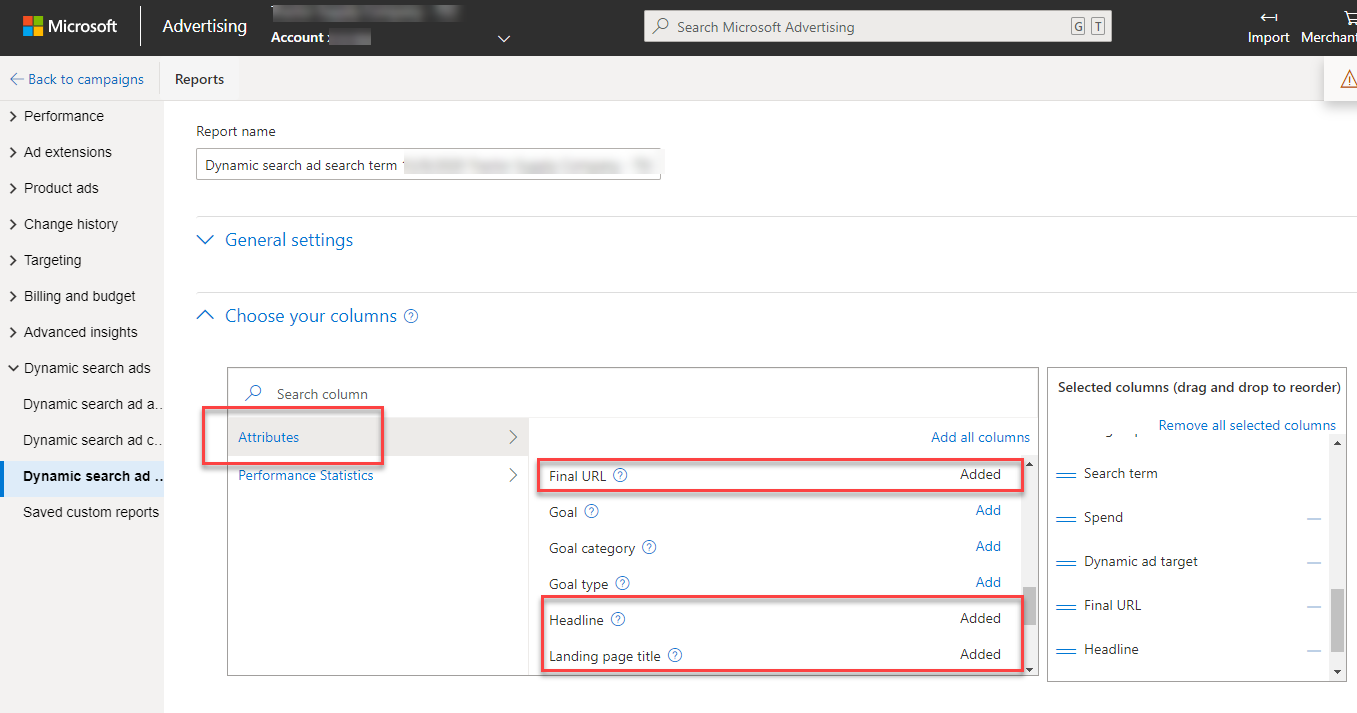As search marketers, we spend a great deal of time analyzing search query data. And for good reason!
That’s how we recognize when we’re matching to irrelevant queries and can add negatives. Or how we discover new queries that we never even imagined.
Are we always looking for the right things though?
Often we are scanning our SQR reports looking for intent, product types, themes, and more. What deeper layers are there? What about clues to gender, age, or even sexual orientation?
Have we considered what values instilled in our brand that customers might be searching for?
What I’m alluding to is the concept of marketing with purpose.
The ideal of building trust and meaning with customers. The mindset shift from product-centric to people-centric.
Before we discuss tactics with Dynamic Search Ads, let’s cover the basics of marketing with purpose.
Why Consumers Trust Your Brand
Trust sits at the intersection of Values, Responsibility, and Inclusion:

- Focus on Responsibility: How are you responsible to your employees, customers, community, and how you execute your marketing?
- Lead with Values: How can you shift focus from products and services to what the people you serve value?
- Create Inclusive Connections: How do you ensure that your advertising efforts properly reflect people in a genuine and authentic way?
Trust is essential to driving business results and it’s essential to beginning a relationship with a customer. 85% of consumers say they’ll only consider a brand if they trust the brand
When you increase trust through responsibility, values, and inclusion you build brand love that leads to enduring customer loyalty.
Building brand love and customer loyalty comes with authenticity. That’s right, the most important attribute in trust is authenticity.
Through the lens of digital advertising, this means you don’t want to just reach the right people, you want to make them feel seen and understood. Spot on targeting and messaging that resonates authentically.
Why Marketing with Purpose Matters
Stated simply: marketing with purpose forces you to think beyond what and who you know.
Are you set up to prevent data bias? Are your assumptions limiting growth?
There are numerous ways bias can enter ad campaigns.
It could be as simple as your assumptions – what you were taught or thought you understood to be true. Maybe you are using predictive analytics and the modeling forms a stereotype market segment of an ideal customer.
Over time your campaigns are optimized to this model and missing out on growth opportunities by not appealing to additional market segments.
Food for thought:
- Men make car purchase decisions… Challenge that assumption! Women make these decisions, too. And how males and females arrive at that decision can and does differ.
- Only women buy luxury handbags… Challenge that assumption! Could be a boyfriend shopping for a gift. Or a non-binary gender expressing woman buying for a partner.
Gender. Age. Sexual orientation. Geography. And much more.
The onus is on all of us to truly understand our customers and how our campaigns include or exclude them in keywords, ad or landing page copy, imagery, etc.
Use Dynamic Search Ads to Uncover Purpose-Themed Search Queries
Dynamic Search Ads (DSA) are a great tool for keyword discovery – especially within the scope of marketing with purpose.
DSA is a double-edged sword here, too.
Because DSA contextually matches to search queries based on the content of your website, you are discovering new search queries and learning how well your content speaks to your brand’s responsibility, values, and inclusion.
To get started:
1. Do Your Homework
What words define purpose for your business and brand?
Some examples:
- Responsibility: trusted, respected, compliant, transparent, ethical, secure.
- Values: sustainable, eco-friendly, black-owned, minority-owned, charitable, gives back.
- Inclusion: accessible, LGBTQI, male/female/non-binary, gay friendly.
2. If You Haven’t Done so Already, Set up DSA Campaigns & Auto-Targets to Match Against Your Products or Services
Best practice for Dynamic Search Ads auto-targets is to start with a catch-all “all webpages” target.
Then proceed to add auto-targets that allow for more granularity.
For example:
- Top-level categories (Shoes).
- Sub-categories (Dress shoes).
- Promotion/seasonal pages.
- Pages that contain a specific word or phrase.
- Pages that you DO NOT want DSA to match against (use as excluded auto-targets).
- Leverage DSA page feeds to get even more granular.
3. Review the Search Query Data for Your DSA Campaigns Using N-Gram and Bigram Analysis
Start by filtering the search query data using the purpose words you pre-defined.
What relevant queries are surfacing that you are not currently bidding on?
What potential group of people is actively searching for your products and services that you previously had not considered in your marketing efforts?
What queries are not surfacing, but should be? This is a red flag for you to review your website content!
To start matching against desired purpose-themed search queries:
- Make adjustments to existing content.
- Create new content.
- Adjust product and/or service names (more extreme, but may need to be considered!).
One additional step you can take with DSA performance data is to take a look at the dynamically generated headlines.
Is the headline message that was served a good match to the matched search queries? Are they reflective of your values, responsibility and inclusion goals?
In Microsoft Advertising, there are 3 different reports you can pull for Dynamic Search Ads campaigns – by auto-targets, by category (your website), and by search queries.
You can add Headline, Final URL, and even Landing Page Title to all of these reports to better understand the relationship between website content, search query, and dynamic headline:

Dynamic Search Ads provide a powerful vehicle for keyword discovery and for putting marketing with purpose into practice in your workflow today.
How can you carry this into other marketing workflows? Into other channels?
It’s a big world out there full of ideas and a wide range of people and perspectives.
Marketing with purpose puts us a step closer to ensuring we reach them on their level and build trust together.
More Resources:
- 3 Best Practices for Dynamic Search Ads
- 5 Easy Ways to Improve Your PPC Campaigns with Audiences
- PPC 101: A Complete Guide to PPC Marketing Basics
Image Credits
Featured image: Microsoft Advertising. Used with permission.
All screenshots taken by author, December 2020





![[SEO, PPC & Attribution] Unlocking The Power Of Offline Marketing In A Digital World](https://www.searchenginejournal.com/wp-content/uploads/2025/03/sidebar1x-534.png)